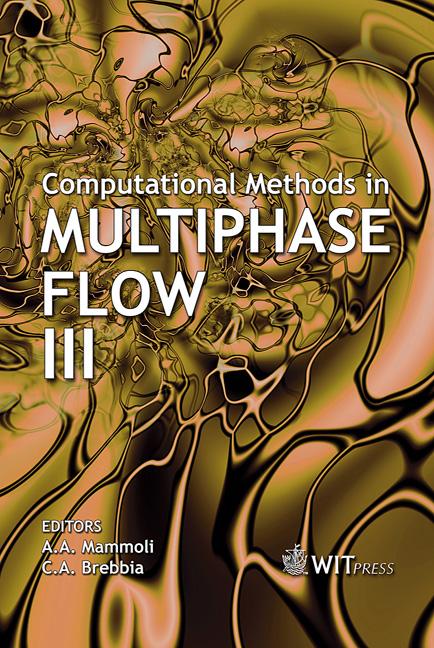The Liquid-liquid Interface Under Planetary Rotation
Price
Free (open access)
Transaction
Volume
50
Pages
10
Published
2005
Size
509 kb
Paper DOI
10.2495/MPF050291
Copyright
WIT Press
Author(s)
C. S. König & I. A. Sutherland
Abstract
Countercurrent chromatography is a liquid-liquid partition chromatography method allowing high-resolution purifications. It utilises the hydrodynamic behaviour of two immiscible liquid phases in coil columns undergoing a planetary motion generated by a synchronous coil planet centrifuge. In this study planetary rotation is applied to liquid-liquid flows in two types of ring geometries. The influence of the epicyclic force field is studied by applying a variety of different operating conditions, namely rotational speed and the ratio of the planet and sun radii known as the beta value. The results show that variation of the beta value has far greater influence on phase distribution than variation of the rotational speed. 1 Introduction Countercurrent chromatography (CCC) separates compounds from mixtures on the basis of their partition or distribution between two immiscible solvents. The process utilises the hydrodynamic behaviour of the two liquid phases in coil columns undergoing a planetary motion generated by a synchronous coil planet centrifuge. The centrifugal force field applied to the coiled columns promotes the retention of stationary phase against a continuous flow of mobile phase, while providing efficient mixing between the two solvent phases to enable the partition process. A series of simultaneous mixing and settling zones occur along the length of the tubing. This mixing and settling process and the mass transfer between the phases are the key elements for successful high-resolution liquidliquid chromatography [1,2]. Although phase distribution and phase-mixing phenomena, which are fundamental to CCC, are directly linked to the gravity field, its influence is still not fully understood [2-4].
Keywords





